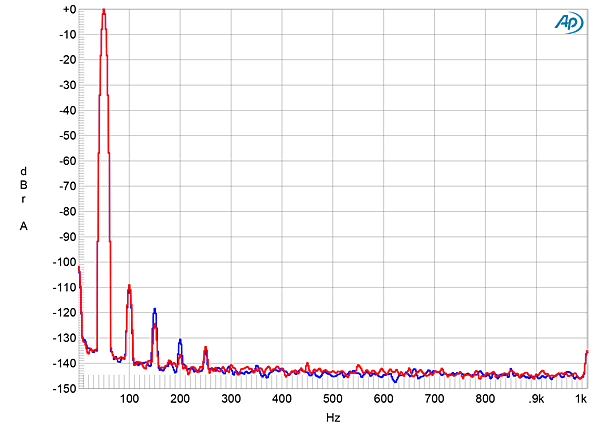I was refering to industrial design in a way that dCS looks more monumental, beautiful, luxurious...
In a way that if I made in a week what dCS costs, every week, I would rather buy dCS then Sabaj, nevermind that Sabaj measures slightly better. After 100 SINAD, who cares....
I am not trying to be disrespectful, I do aplaud Sabaj for great engeneering, but as I said, it seems worthless to bother to get 1 dB better SINAD then the device before...
Thought I was clear, sorry.
I own Marantz reference gear even though it just uses a quartet of HypeX NC500OEM. So I definitely believe in paying for ergonomics, aesthetics, and support…
I would challenge you to take a different perspective.
Why upgrade to the latest dCS if you already own a previous generation dCS that hit 100 dB SINAD? It’s past the point of audibility. Its not worthless for ESS/AKM to push the limits of their tech the same way dCS can push the limits of their tech.
The dCS Rossini is an incredible product but it’s like buying a mechanical watch that is operating at 11 Hz. It will not be better than a routine quartz watch but the fact that it is very impressive to see how the architecture works.
"In all dCS DACs, the Ring DAC architecture is discrete and analogue. It consists of a resistor array, a voltage regulation bus, and a buffer/output gain stage that connects to the preamplifier or power amplifier…
…There are 48 current sources within the Ring DAC, all of which produce an equal amount of current. The Field Programmable Gate Array (FPGA)–controlled nature of the Ring DAC allows the sources to be turned on and off in such a way that any component value errors are averaged out over time. Firing the same bit three times on the Ring DAC might give one output slightly high, the next slightly low, the next somewhere in the middle, as opposed to outputting the sample slightly high every time or slightly low every time (as seen in a Ladder DAC, for example).
…The Ring DAC process may be thought of as decorrelating errors. Background noise (an uncorrelated error, one which is not linked to the audio signal itself) is very prevalent in nature, whereas artificial distortion (a correlated error) is not. This results in the Ring DAC having class-leading distortion performance, particularly at lower signal levels. This means that more fine musical detail can be resolved and heard.”
It’s a clever idea since it takes the idea of averaging the way that an ESS DAC does, but it also adds a bit of temporal noise reduction, not unlike the video world. It will be interesting to see if someone would be willing to send in a dCS unit to Amir to test if any of these claims are true.
However, the Sabaj is like high precision quartz. As chip manufacturing has improved from the era of the original 1987 Ring DAC concept where the fastest CPU was a 286, it is now possible for chips from AKM and ESS to do what “$30000” of discrete parts needs.
This is a real accomplishment from the engineers as AKM and ESS.
The rationale for comparing Sabaj and dCS is to continue to push the dCS further in the next round. Why stop at 48 current sources? Why not do 96 or 192 sources? The prospective owner of dCS shouldn’t assume that they are getting the most accurate DAC, they are purchasing an incredible sounding DAC built on anachronistic technologies and done with a beautiful fit/finish.
Meanwhile, these ultra DACs are like buying a Grand Seiko high precision quartz or a Citizen Caliber 0100 or even a 262 kHz Bulova. It’s not going to be any better than a budget quartz in actual practice but it’s super cool to have something like that.
In the watch world, there are normal people. They wear a watch they like and that’s it. That’s the audience that uses their smartphone for telling time. No worries.
Audiophiles are watchphiles. It’s only the insecure who criticize the choices of others. Some people love the crazy mechanisms that are less accurate than a quartz, some people like dive watches even though they don’t dive, or go for ultra accurate quartz products.
There is a lot of room for preference and opinion. What you don’t want is false advertising. If a watch advertises a depth rating, it better do it. If a mechanical watch says it’s more accurate than anything else out there, it’s fair to point out quartz beats it.
What ASR and measures are doing are acting as a Timegrapher. It’s objectively telling you how accurate the product is.
Deciding how much performance you want and if there are other criteria besides accuracy that you are willing to pay for is personal preference — but it’s good to see the shared appreciation for audio hardware which any ordinary person wouldn’t appreciate.





